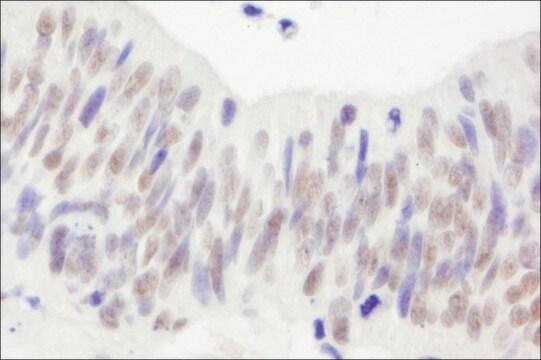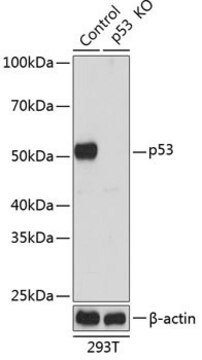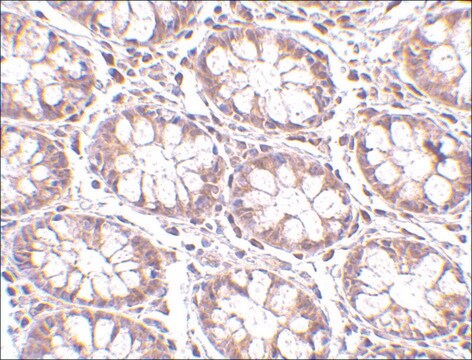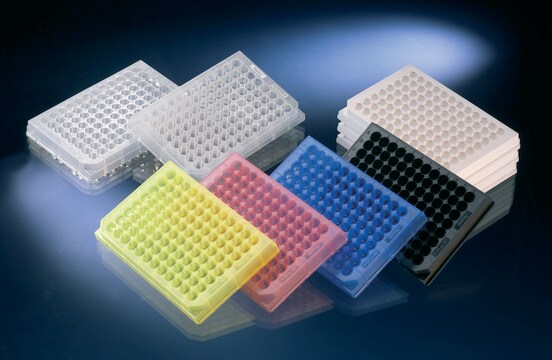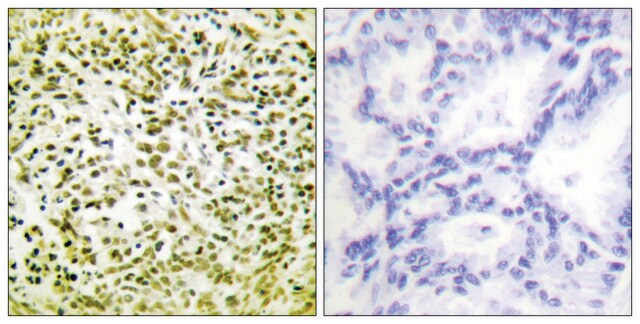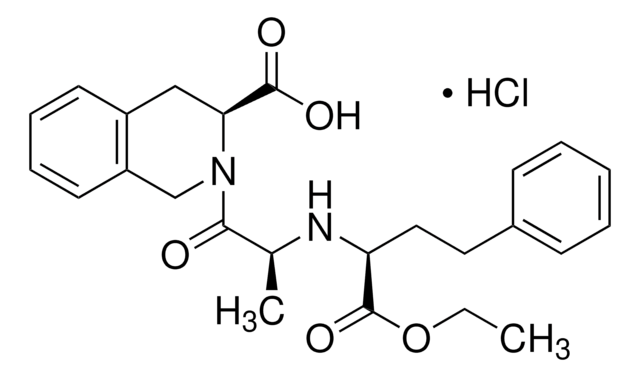PLA0072
Rabbit anti-p53 Antibody, Affinity Purified
别名:
BCC7, LFS1, Li-Fraumeni syndrome, TRP53, Tumor suppressor p53, antigen NY-CO-13, mutant tumor protein 53, p53, p53 tumor suppressor, phosphoprotein p53, transformation-related protein 53, tumor protein 53, tumor supressor p53
登录查看公司和协议定价
所有图片(3)
About This Item
分類程式碼代碼:
12352203
NACRES:
NA.41
推荐产品
一般說明
p53, also known as transformation related protein 53 (TRP53), is encoded by the gene mapped to human chromosome 17p13.1. p53 is a tumor suppressor gene expressed in a wide variety of tissues. The gene codes for a tetrameric nuclear DNA-binding phosphoprotein.
免疫原
The epitope recognized by PLA0072 maps to a region between residues 50 and 100 of human tumor protein p53 using the numbering given in SwissProt entry P04637 (GeneID 7157).
生化/生理作用
Tumor suppressor p53 has an ability to induce cell cycle arrest. It also plays a key role in DNA repair, senescence and apoptosis. It binds to simian vacuolating virus 40 (SV40) T-antigen and human papilloma virus E6 protein. Mutation in the p53 gene is associated with the development of various types of cancers, such as breast, ovarian, bladder, colon and lung cancer.
外觀
Tris-citrate/phosphate buffer, pH 7 to 8 containing 0.09% sodium azide
其他說明
p53 is a tumor suppressor protein that is mutated or inactivated in over 50% of human cancers. Loss of function defects in p53 are the cause of the autosomal dominant familial cancer syndrome, Li-Fraumeni syndrome (LFS) that is characterized by the development of a diverse set of malignancies at very early ages. At the cellular level p53 is involved in the negative regulation of cell the cycle via its transactivational control of genes required for cell cycle progression. Depending on the physiological circumstance, p53 can promote growth arrest or apoptosis.
免責聲明
Unless otherwise stated in our catalog or other company documentation accompanying the product(s), our products are intended for research use only and are not to be used for any other purpose, which includes but is not limited to, unauthorized commercial uses, in vitro diagnostic uses, ex vivo or in vivo therapeutic uses or any type of consumption or application to humans or animals.
未找到合适的产品?
试试我们的产品选型工具.
儲存類別代碼
12 - Non Combustible Liquids
水污染物質分類(WGK)
nwg
閃點(°F)
Not applicable
閃點(°C)
Not applicable
Cooper G M.
The Cell: A Molecular Approach, 2 (2000)
Cell Cycle and Apoptosis.
Bruna P, et al.
Neoplasia, 2(4), 291-299 (2000)
Mutations in the p53 tumor suppressor gene: important milestones at the various steps of tumorigenesis.
Rivlin N, et al.
Genes & Cancer, 2(4), 466-474 (2011)
Multiple myeloma involving central nervous system: high frequency of chromosome 17p13.1 (p53) deletions.
Chang H, et al.
British Journal of Haematology, 127(3), 280-284 (2004)
Mutations in the p53 Tumor Suppressor Gene
Noa Rivlin
Genes & Cancer, 2(4), 466-474 (2011)
我们的科学家团队拥有各种研究领域经验,包括生命科学、材料科学、化学合成、色谱、分析及许多其他领域.
联系技术服务部门
